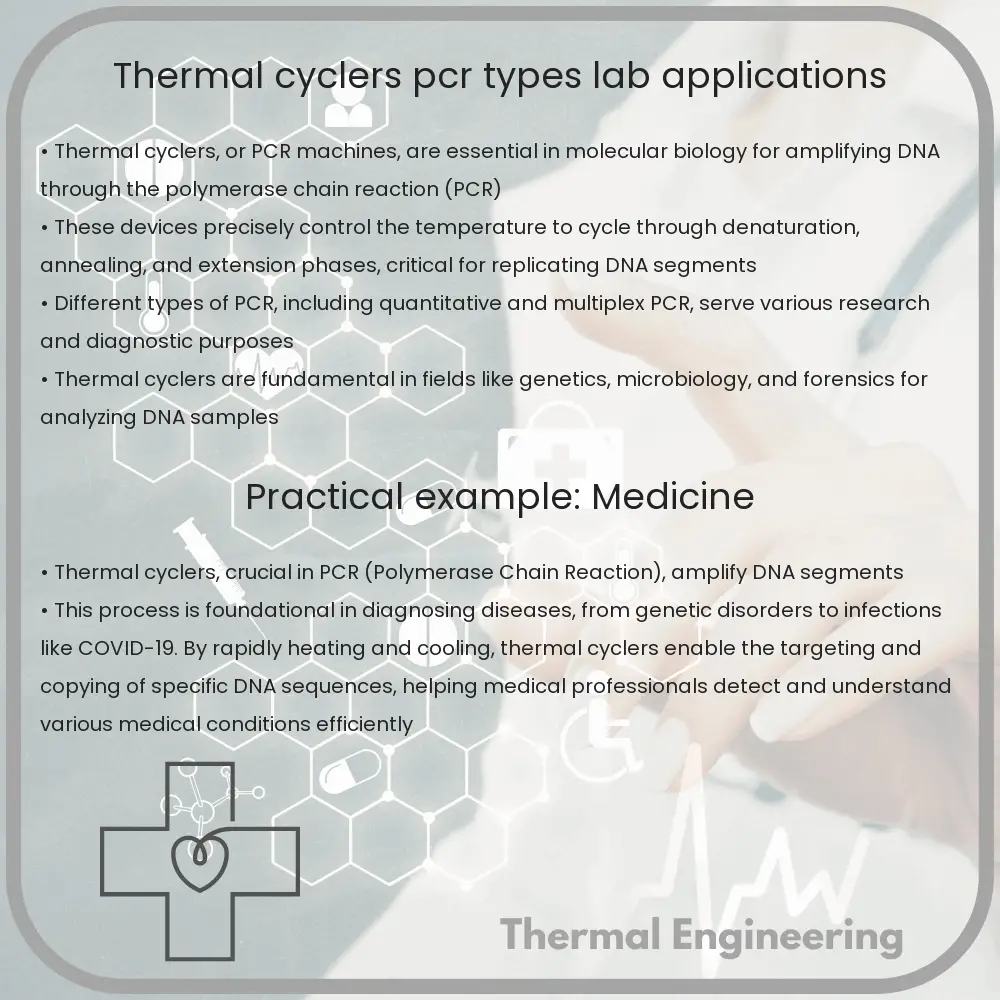Learn about thermal cyclers, essential devices in labs for DNA amplification via various PCR methods, and their diverse applications in research.

Understanding Thermal Cyclers: PCR Types and Lab Applications
Thermal cyclers, crucial instruments in molecular biology labs, enable the amplification of DNA sequences through the polymerase chain reaction (PCR). This technology has extensive applications ranging from genetic research to forensic science. By understanding the different types of PCR and their specific lab applications, researchers can choose the appropriate method to meet their experimental needs.
What is a Thermal Cycler?
At its core, a thermal cycler is a device that precisely regulates temperature over time, facilitating the PCR process. This device cycles through various temperature stages – typically denaturation, annealing, and extension – which are necessary for amplifying a specific segment of DNA.
Types of PCR
Over the years, different types of PCR have been developed to address specific research needs. Here are some of the most common types:
- Standard PCR: The basic form of PCR that amplifies DNA segments using temperature cycling.
- Real-Time PCR (qPCR): This method not only amplifies DNA but also quantifies the amplified DNA in real time. It uses fluorescent markers to measure the DNA as it accumulates.
- Reverse Transcription PCR (RT-PCR): Useful in gene expression studies, this type involves converting RNA into DNA, which is then amplified.
- Digital PCR: Provides a highly accurate method of quantifying DNA by partitioning the sample and running simultaneous PCR reactions.
- Multiplex PCR: Allows the simultaneous amplification of multiple targets in a single PCR experiment by using multiple sets of primers.
Key Components of a Thermal Cycler
A typical thermal cycler consists of several crucial components:
- Block or Well: Where the PCR reaction mixtures are placed. These may vary in format supporting different numbers and sizes of tubes or plates.
- Heating and Cooling System: Helps in switching temperatures quickly to the specific levels needed for each step of the PCR cycle.
- Lid: Heated to prevent condensation from forming on the tubes during the PCR process.
- Software: Manages the cycling conditions, allowing for the customization of temperature and time parameters for different types of PCR.
Applications of Thermal Cyclers in Labs
Thermal cyclers find a diverse array of applications in scientific labs:
- Clinical Diagnostics: Utilized heavily in diagnostics, particularly in detecting and quantifying pathogens in patient samples.
- Genetic Research: Essential for cloning, gene expression analysis, and SNP genotyping.
- Forensic Science: Used to amplify DNA from very small or degraded samples for identification and analysis.
- Environmental Science: Helps in analyzing environmental samples for the presence of microbial communities or pollutants.
In summary, thermal cyclers are foundational tools in modern biological research. Their ability to perform different types of PCR makes them indispensable in a wide range of scientific disciplines. With advancements in PCR technologies, thermal cyclers continue to evolve, pushing the boundaries of what can be achieved in genetic analysis and beyond.